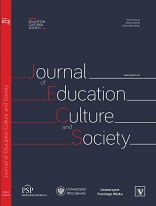Preferences for Learning and Skill Development at Work: Comparison of Two Generations
Preferences for Learning and Skill Development at Work: Comparison of Two Generations
Author(s): Irina Zinovieva, Mariya KaraivanovaSubject(s): Psychology
Published by: Fundacja Pro Scientia Publica
Keywords: learning preferences; work; professional skill development; generations Y and X; tendency to leave the organization
Summary/Abstract: The changing economic conditions of the current dynamic and insecure labour market make learning a constant preoccupation of the workforce with view of meeting the growing qualification demands. These demands are likely to influence the work preferences of both young people now entering the labour market and older people with established career paths. Research findings suggest that the younger generation exhibits a stronger orientation towards learning and skill development as compared to the older generations. Moreover, studies show that the younger people are more ready to leave the organization when they have better learning opportunities elsewhere. The present study aims at establishing how preferences for learning and skill development in the workplace relate to a number of job and organizational characteristics. Particular focus is placed on the predictive capacity of perceived learning opportunities towards the tendency to leave the organization for either of the two generations. The study addresses work preferences of two generations in the Bulgarian labour market. To this aim, 121 respondents answered a 55-item questionnaire consisting of newly developed scales as well as scales based on or adopted from standardized instruments such as the Extended Delft Measurement Kit (Roe et al., 2000). Contrary to findings from previous research done in countries with different cultural and socio-economic background, the older people in our sample were more eager to learn and more ready to leave their organization in pursuit of better opportunities, as compared to the younger generation. Another noteworthy conclusion is that the preferences for learning and development form different patterns in each of the two age groups and are expressed in a different way for each of the two generations.
Journal: The Journal of Education, Culture, and Society
- Issue Year: 5/2014
- Issue No: 1
- Page Range: 169-186
- Page Count: 17
- Language: English

